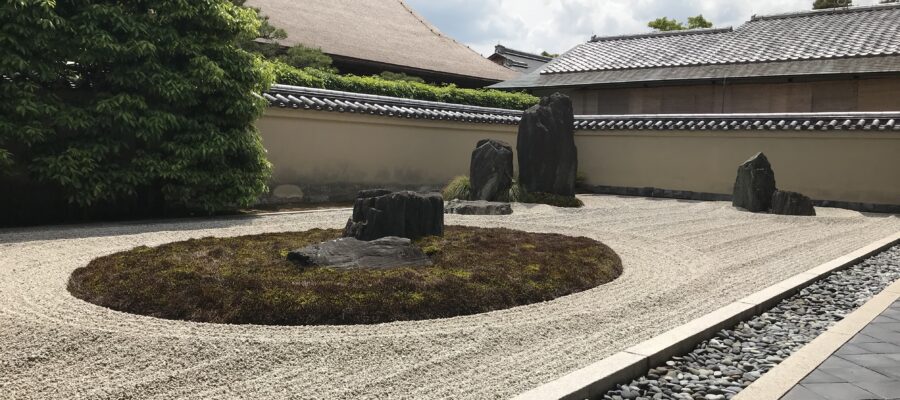庭園セミナーに参加
大徳寺の庭園を見るセミナーがあり参加してきました。案内してくださるのは、日本庭園の書籍を数多く出版されている烏賀陽百合さんです。圧倒的に女性の参加者が多い中、男性は私ともう一名の老齢の紳士だけでした。
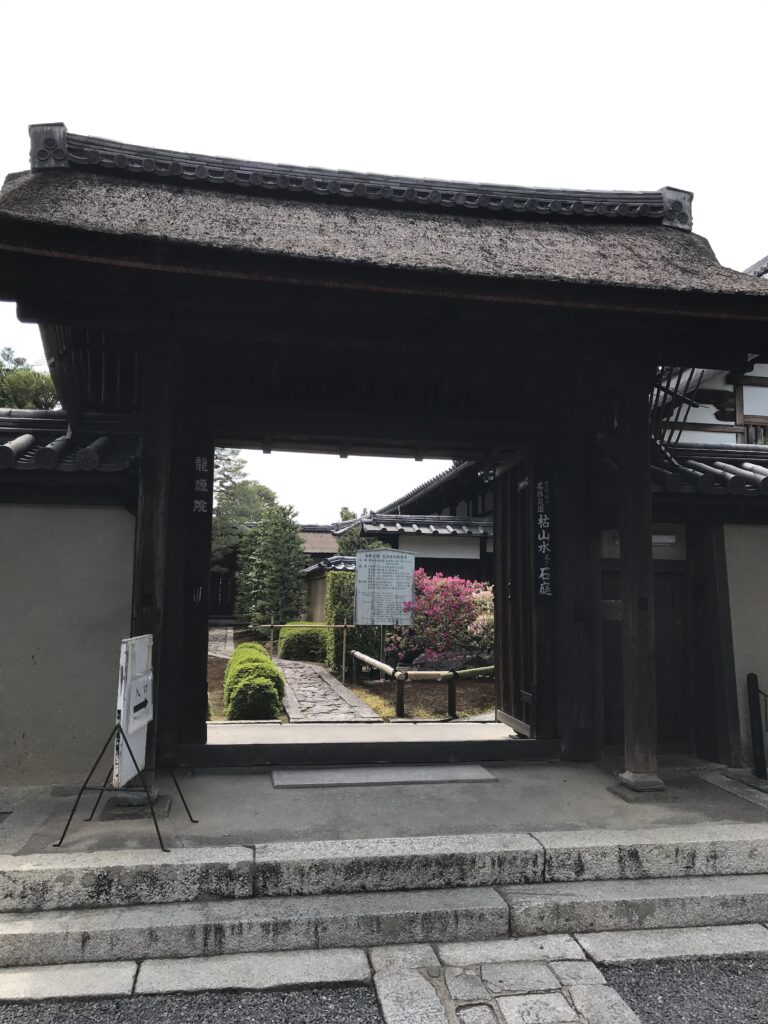
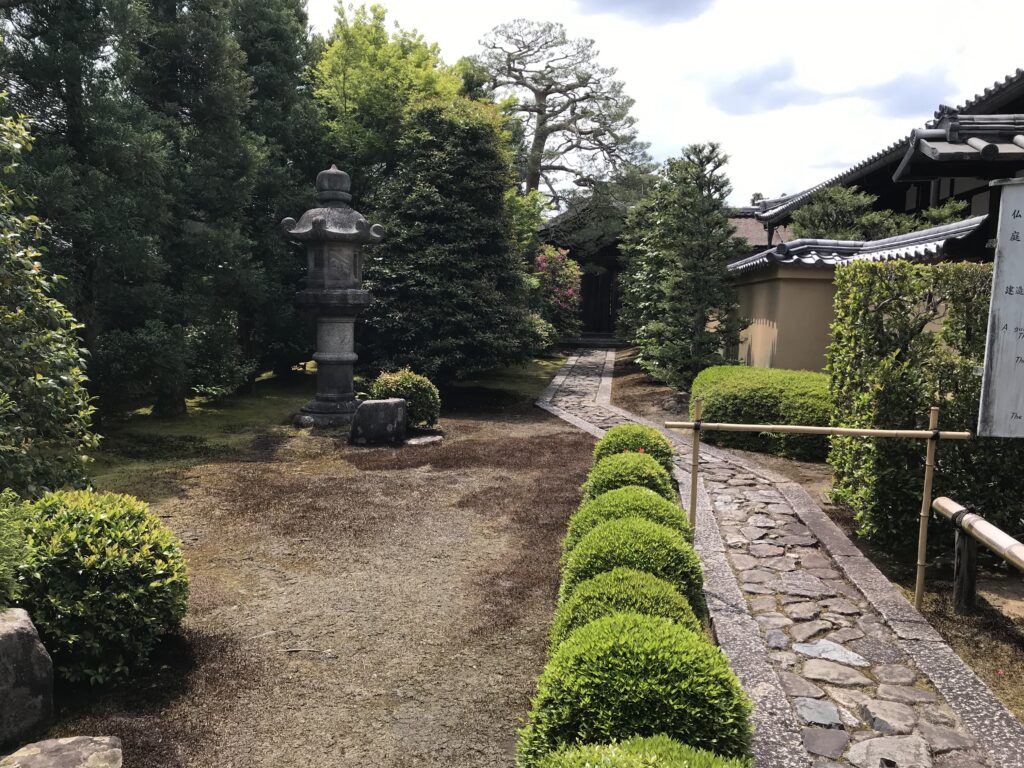
一枝坦
まず訪れたのは、塔頭寺院の龍源院。門をくぐっただけで、ここには見事な庭園があるはずと思わせる雰囲気があります。最初に案内されたのは、方丈の前の“一枝坦(いっしだん)”と言う庭で、開祖の東渓禅師がその師から賜った室号「霊山一枝之軒」から名付けられたそうです。
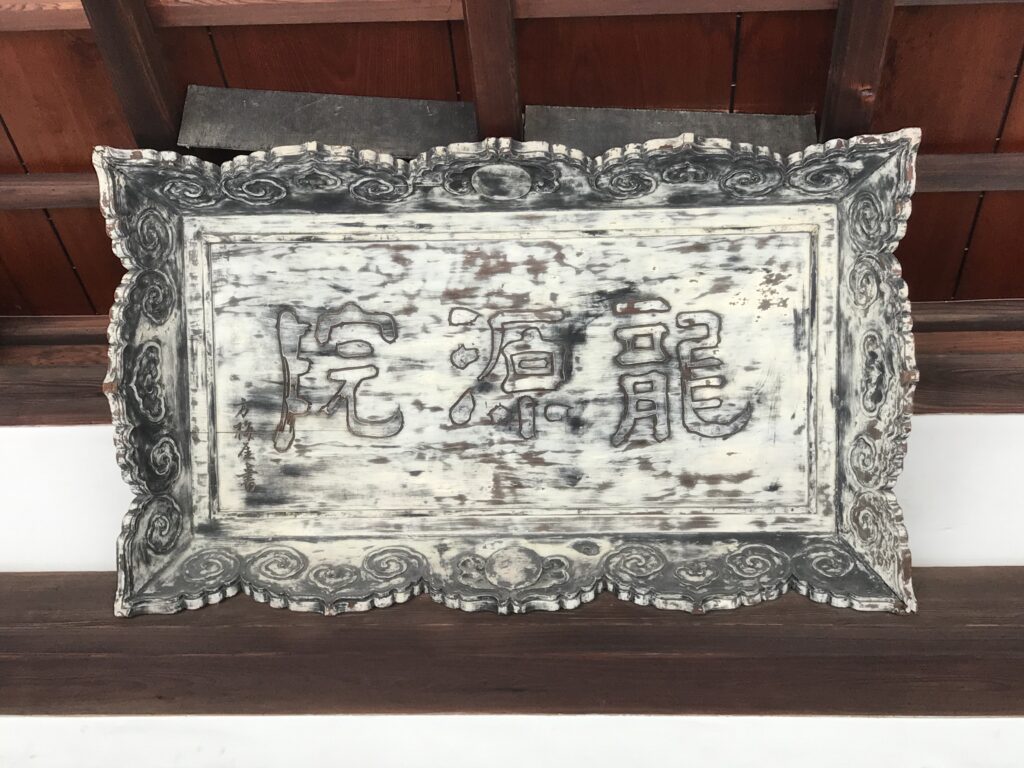
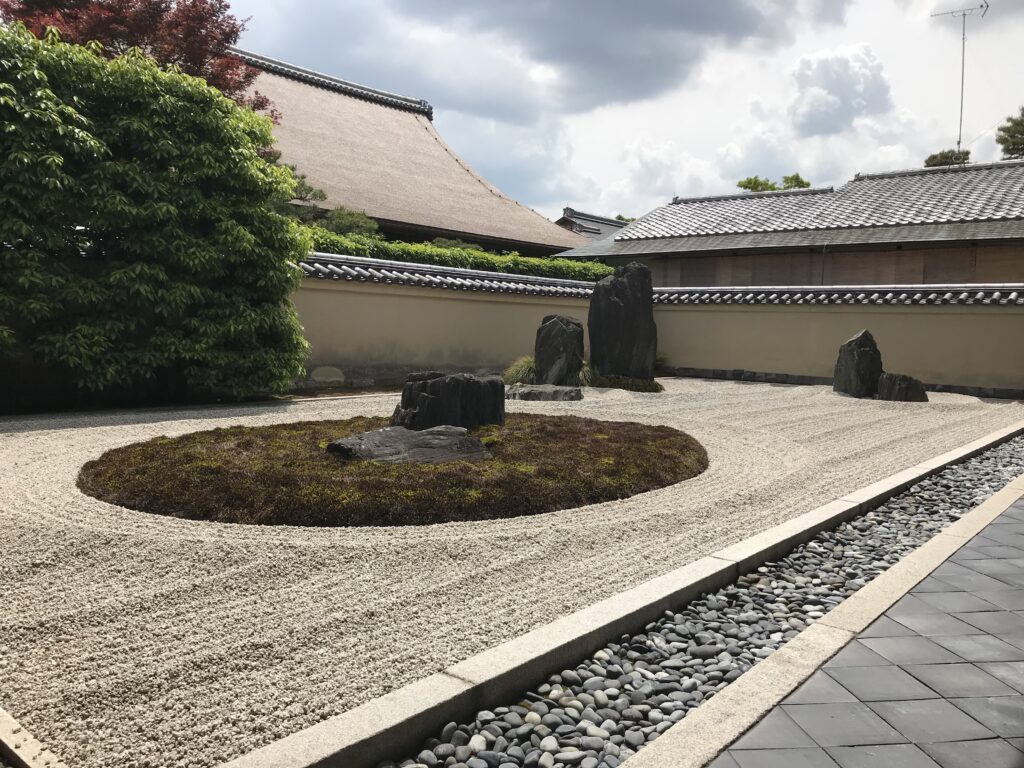
この枯山水は、不老不死の仙人が住む蓬莱山を中心に据え、左に亀石、右に鶴石を配置しています。デザインの抽象化が進んでいて、亀の方はなんとか大海原(白砂)に浮かぶ島の上に亀が居るように見えますが、鶴の方は2つの石の組み合わせが、翼を広げた鶴の姿に見えなくもないという位にデフォルメされています。
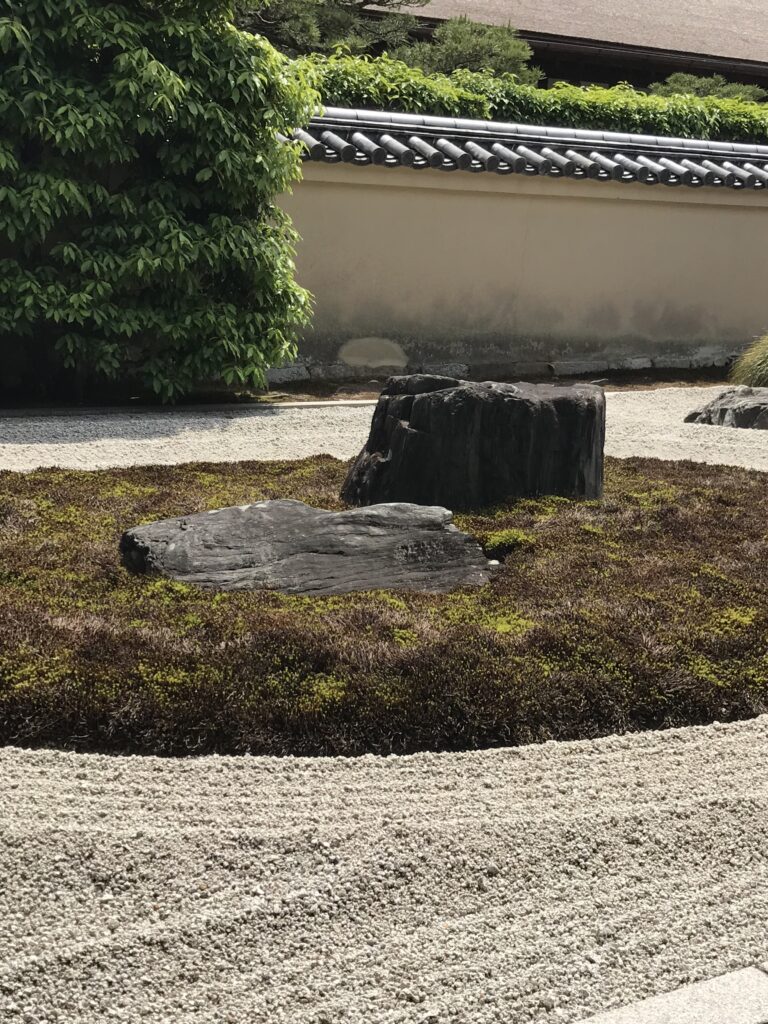
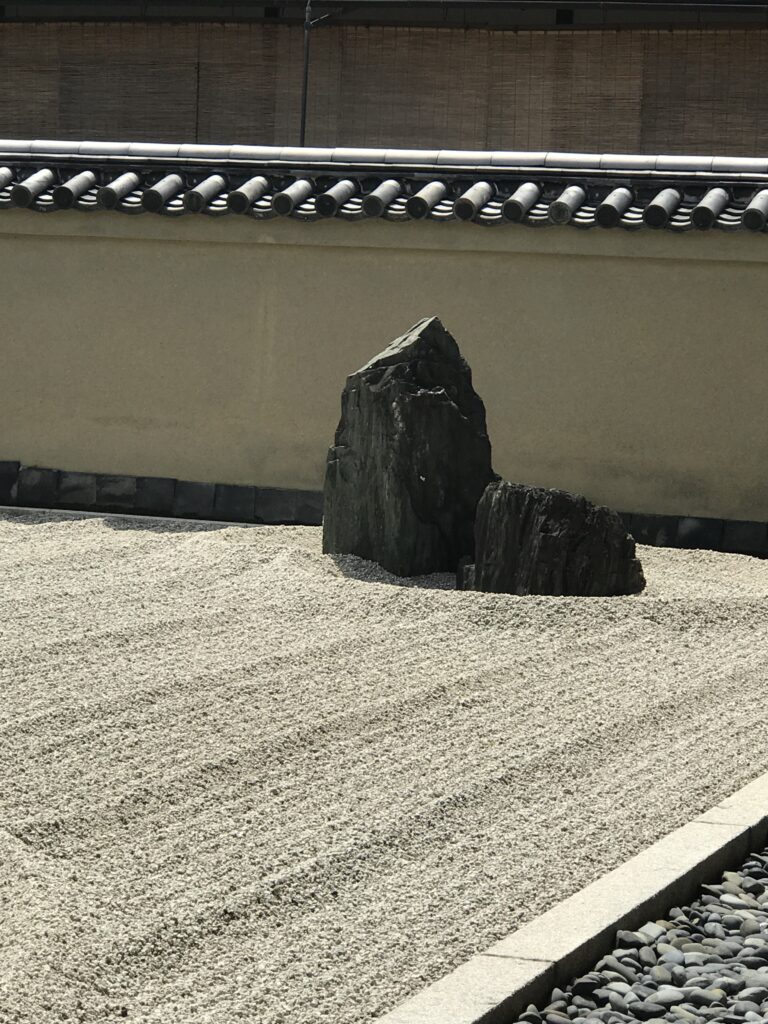
青石と白川砂
案内によると、この石は岡山ベルト地帯の四国(伊予)の青石で、江戸初期までは紀州の青石が二条城などに使われていたが、その後、採石禁止となり伊予の青石を使うようになったそうです。地表に出ているのは1/3か半分で、大部分が土に埋まっています。
砂紋は白川砂。京都を流れる白川の底から採ったものだそうで、現在は、御所や修学院などの特別な修理以外は使われず、中国から輸入しており、京都の庭の8割は中国産を使用していて、ここでも国産が貴重品になっていました。(つづく)
龍源院の御朱印
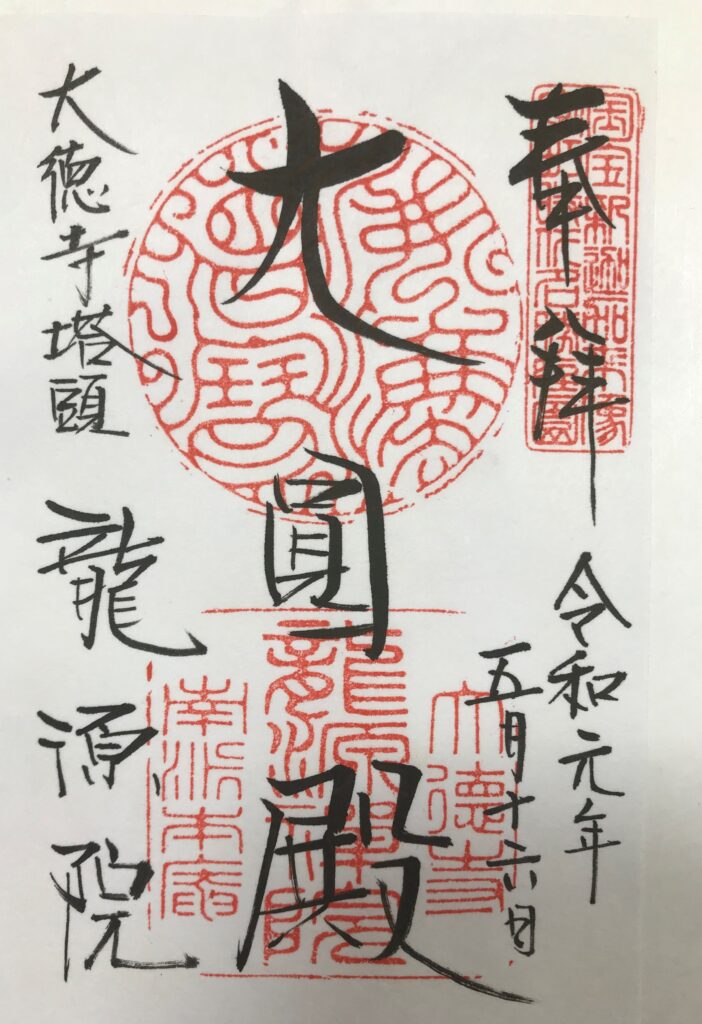
龍源院を紹介している書籍
烏賀陽百合著 しかけにときめく京都名庭園 誠文堂新光社
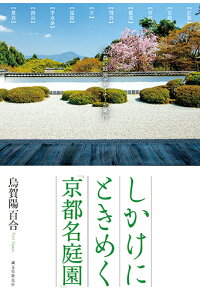
しかけにときめく「京都名庭園」 京都の庭園デザイナーが案内 [ 烏賀陽 百合 ]
価格:1,760円
(2021/5/3 10:53時点)
感想(0件)
Ryugen-in Temple 1 (English)
Attended a garden seminar
I attended a seminar to see the garden of Daitokuji Temple. The guide was Ms. Yuri Ugaya, who has published many books on Japanese gardens. While there were an overwhelming number of female participants, the only male participants were myself and another elderly gentleman.
Isshi-dan
The first temple we visited was Ryugen-in, a sub-temple of Daitokuji Temple. As soon as we passed through the gate, there was an atmosphere that made us think that there must be a magnificent garden here. The first garden we were guided to was called “Isshi-dan” in front of the Hojo (main building), which was named after the room name “Ryozan Isshi-no-ken” given to the founder Zen Master Tokei by his master.
In this dry landscape garden, Mount Horai, where the immortal hermit lives, is placed in the center, with the turtle stone on the left and the crane stone on the right. The design is so abstracted that the turtle somehow looks like a turtle on an island floating in the ocean (white sand), while the crane is so deformed that the combination of the two stones looks like a crane with its wings spread.
Blue stones and white river sands
According to the guide, these stones are blue stones from Shikoku island (Iyo) in the Okayama Belt Zone. Until the early Edo period, blue stones from Kishu (Wakayama Prefecture) were used for Nijo Castle and other structures, but later, quarrying was banned and blue stones from Iyo were used. Only a third or half of the stone is visible on the surface of the earth, and most of it is buried in the soil.
The sand pattern is Shirakawa sand. It is said to be taken from the bottom of the Shirakawa River that flows through Kyoto. Nowadays, it is not used except for special repairs to the Imperial Palace and Shugakuin Temple, and is imported from China. 80% of the gardens in Kyoto use Chinese products, and here too, domestic products have become a precious commodity. (To be continued)
Temple Ryugen-in 1 (Français)
Participation à un séminaire sur le jardinage
J’ai participé à un séminaire pour voir le jardin du temple Daitokuji. Le guide était Mme Yuri Ugaya, qui a publié de nombreux ouvrages sur les jardins japonais. Alors qu’il y avait un nombre impressionnant de participantes, les seuls participants masculins étaient moi-même et un autre monsieur âgé.
Isshi-dan
Le premier temple que nous avons visité était Ryugen-in, un sous-temple du temple Daitokuji. Dès que nous avons franchi la porte, il y avait une atmosphère qui nous a fait penser qu’il devait y avoir un magnifique jardin ici. Le premier jardin dans lequel nous avons été guidés s’appelait “Isshi-dan”, devant le Hojo (bâtiment principal), d’après le nom de la chambre “Ryozan Isshi-no-ken” donné au fondateur, le maître zen Tokei, par son maître.
Dans ce jardin paysager sec, le mont Horai, où vit l’ermite immortel, est placé au centre, avec la pierre de la tortue à gauche et la pierre de la grue à droite. Le dessin est si abstrait que la tortue ressemble en quelque sorte à une tortue sur une île flottant dans l’océan (sable blanc), tandis que la grue est si déformée que la combinaison des deux pierres ressemble à une grue aux ailes déployées.
Pierres bleues et sables blancs des rivières
Selon le guide, ces pierres sont des pierres bleues de l’île de Shikoku (Iyo) dans la zone de la ceinture d’Okayama. Jusqu’au début de la période Edo, les pierres bleues de Kishu (préfecture de Wakayama) étaient utilisées pour le château de Nijo et d’autres structures, mais plus tard, l’exploitation des carrières a été interdite et les pierres bleues d’Iyo ont été utilisées. Seul un tiers ou la moitié de la pierre est visible à la surface de la terre, et la majeure partie est enfouie dans le sol.
Le motif du sable est du sable de Shirakawa. On dit qu’il a été prélevé au fond de la rivière Shirakawa qui traverse Kyoto. Aujourd’hui, il n’est plus utilisé, sauf pour les réparations spéciales du palais impérial et du temple Shugakuin, et il est importé de Chine. 80% des jardins de Kyoto utilisent des produits chinois, et là aussi, les produits nationaux sont devenus une denrée précieuse. (A suivre)
